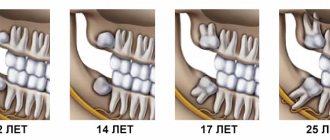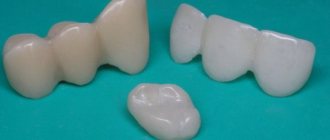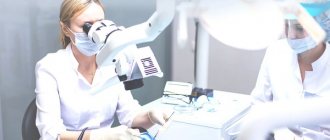Improper and irregular oral care means there is a high probability of getting some kind of infection, which can lead to gum disease. Gum papilloma is a form of oral disease that requires immediate treatment. It may also occur on the lips, tongue, larynx, and throat. Papillomas can be quite painful, and their development threatens inflammatory processes in the oral cavity.
Causes of papilloma
This disease is caused by papilloma, a viral infection that has a long latent, that is, hidden, period. The time during which the disease does not manifest itself after the virus enters the body takes from two months to five years. This is the main danger of such a disease, because in such cases immediate intervention by a surgeon is required, and delay can cause death. The main reason for the formation of papilloma on the gums is a decrease in human immunity.
HPV prevention
The most effective method of preventing infections and complications caused by the human papillomavirus is vaccination. It is carried out before the onset of full puberty and before the start of sexual relations. The optimal age is from 9 to 11 years.
Other preventive measures are:
- maintaining a healthy lifestyle;
- balanced healthy diet;
- timely treatment of abrasions, scratches and other skin damage;
- informing children and adolescents about the dangers of smoking, since tobacco use increases the risk of oncogenic mutations of the virus;
- regular preventive examinations.
It is very important to monitor the child’s health and support immunity in accessible ways. Active physical activity, hardening, and outdoor games are encouraged, allowing the formation of an adequate immune response to environmental factors. It is advisable to abandon home self-medication and uncontrolled use of medications, since incorrect actions can reduce the natural defenses of the child’s body and lead to the activation of HPV.
Symptoms of the development of gum papilloma
Papilloma is a benign tumor in the form of a characteristic growth. This formation can come in different sizes and shapes. Papilloma on the gum may not manifest itself in the form of pain or discomfort that bothers a person. This growth can be detected when visiting the dentist with complaints about teeth or gums, when the doctor conducts a professional examination of the entire oral cavity.
Papilloma is felt by the patient as a foreign body, which, depending on its size, creates a feeling of discomfort. It prevents the free position and movement of the tongue, which provokes distortion of the speech apparatus. With a significant increase in papilloma on the gum, it becomes difficult to chew food.
HPV symptoms
The papilloma virus infects the skin and mucous membranes, causing the proliferation of the epidermis and the appearance of pathological neoplasms:
- papillomas;
- warts;
- condylomas.
They look like small skin growths ranging in size from 1 to 5–8 mm, sometimes there are growths reaching 1–2 cm. Basically, such formations imitate healthy skin in color, but there are elements of dark brown and white shades.
The main places of distribution of papillomas:
- face and neck;
- external genitalia and groin area;
- the inner surface of the elbow and knee bends;
- soles of feet;
- fingers and skin around nails.
On the mucous membranes, elements can appear in the larynx, nasal passages; in girls, sometimes there are formations localized on the cervix.
Types of formations
There are several types of papillomas.
- Vulgar (common) warts. They are the most common type of neoplasm. They have a “leg”, rise noticeably above the surface of healthy skin, reaching a diameter of up to 1–2 cm. Sometimes hair grows from the central part of the wart. Such formations do not bother the child with pain or itching and appear on the arms, back or legs.
- Flat or juvenile papillomas. They look like small pigmented plaques of a fuzzy round shape, do not extend beyond the skin and form in groups. Such elements are characterized by a smooth surface and selectivity: they appear on the face, neck, legs, sometimes hands, but never in the armpits, genitals or skin folds. Occurs in children older than 5–6 years.
- Condylomas or genital papillomas. These elements resemble small papillae. They are pink in color and form in areas with thin skin: in the genital area, on the mucous membranes.
- Plantar warts. They affect the feet, occur under the big toes and visually resemble small round calluses.
Another variant of formations is filamentous warts or acrochords. They are similar to regular ones, but differ in elasticity and more compact sizes up to 5–6 mm. They prefer to appear under the mammary glands, in the groin, armpits, and are found on the neck and face.
The dangers of human papillomavirus
Some of the representatives of these microorganisms are harmless to humans, while others can provoke the growth of cancer cells. HPV is classified into two main types:
- Strains with high oncogenic risk. Such variants of the virus provoke the development of condylomas on the mucous membranes and in the genital area. Under unfavorable circumstances, they can cause an oncogenic mutation.
- Strains with low oncogenic risk. Viruses of this type cause warts, plantar lesions and juvenile papillomas. The risk of cell degeneration is minimal.
The greatest danger lies in girls: studies conducted in the USA have proven that 98% of cases of cervical cancer are associated with this virus. There is also a risk of developing cancer of the vagina, ovaries, anal canal, larynx, pharynx, and in boys, the genitals. Papillomas located in the anus and genital area require special attention.
Symptoms of papillomas of the nasal cavity and nasopharynx
If papillomas are located inside the nasal passages, the disease may manifest itself with the following symptoms:
Stuffy nose
Papillomas can grow, and at some point a person begins to feel nasal congestion.
More about the symptom
Postnasal drip syndrome
Papillomas can cause postnasal drip syndrome. The nasal cavities contain glands that produce mucus. If a person does not have a runny nose, little mucus is produced. It serves to moisturize the nasal passages and binds dust and bacteria that have entered there. Sometimes a person sneezes or blows his nose, thereby removing mucus from the nose. Papillomas can reach significant sizes, blocking the mucus path. In this case, mucus begins to accumulate and then flow down the nasopharynx (this is postnasal drip syndrome). As a rule, an accumulation of mucus in the throat is felt in the morning, after a night's sleep.
Nosebleeds
When mechanically damaged, papillomas can cause nosebleeds.
Treatment methods for papillomas of the nasal cavity and nasopharynx
It is advisable to remove papillomas found in the nasal cavity and nasopharynx. Papillomas that have caused at least some concern must be removed.
Removal of papillomas
Removal of papillomas is best done using modern high-tech methods. This is radio wave removal or laser removal. This removal is easily tolerated by the patient. The technology ensures rapid healing, the risk of re-formation of papilloma is minimal.
Removal of papillomas of the nasal cavity with a laser or radio wave scalpel with Surgitr is carried out at JSC “Family Doctor”.
Make an appointment Do not self-medicate. Contact our specialists who will correctly diagnose and prescribe treatment.
Rate how useful the material was
thank you for rating
What do papillomas look like on the inside of the lip?
Photo of papillomas on the inside of the lip
As a rule, a person is not aware of the presence of the papilloma virus in the blood until visual evidence of this appears in the form of neoplasms on the skin or mucous membranes.
Papillomas on the lips of the mouth look like rough growths that resemble miniature papillae, round or oblong. They have a flat base or thin stem. In color they practically do not differ from healthy mucous membranes of the mouth and lips; they may have a whitish coating. The size usually does not exceed 12 mm.
Neoplasms can be isolated or form groups. In the latter case, they resemble a cockscomb or a broccoli floret.
Such growths do not cause pain unless they are injured. They are soft and mobile, elastic. However, if we are talking about pointed papillomas, then they are easy to injure. This can lead to an inflammatory process, suppuration, and the addition of an additional infection.
Papillomas on the inside of the lip are reactive and neoplastic. Reactive ones can grow due to regular irritation or injury, which is inevitably present in the oral cavity (food, teeth, sharp objects). Neoplastic papillomas are a collection of nodular growths that merge and form a large tumor.
Often, papillomas on the lip mucosa can form in children. The larger the tumor, the more problems it causes for babies. Thus, children cannot pronounce certain sounds due to discomfort in the oral cavity, the correct growth of molars may be disrupted, papillomas sometimes grow and affect the throat, tonsils, vocal cords, which poses a real threat to life.
Diagnosis: which doctor to contact
The examination is prescribed by a dermatovenerologist after a visual examination in a number of cases:
- the presence of papillomas on the skin or mucous membranes (or their presence in a sexual partner);
- pregnancy planning;
- infertility or unsuccessful pregnancies in the past.
The very fact of detecting a virus is not decisive - it is much more important to identify its type and degree of oncogenicity.
The following methods are used for diagnosis:
- colposcopic examination - examination using a special microscope of the cervix and vagina;
- cytological examination - taking a smear, has low accuracy; if the result is poor, additional analysis is carried out;
- histological examination of a biopsy specimen - sampling of a small fragment of tissue for analysis;
- PCR (polymerase chain reaction) - the material for the study is a smear, urine or blood, the accuracy is close to 100%.
PCR is most often used in specialized clinics. The accuracy of the result depends on compliance with the research technique. Such analysis is best done in laboratories with strict compliance with standards.
Cost of services
| Code | Name of service | Price |
| 1101 | Removal of benign formations (up to 5 mm in diameter) of the skin using a laser or radio wave method for 1 unit. | 650 rub. |
| 1102 | Removal of benign formations (up to 5 mm in diameter) of the skin using a laser or radio wave method up to 5 units. | 2500 rub. |
| 1103 | Removal of benign formations (up to 5 mm in diameter) of the skin using a laser or radio wave method up to 10 units. | 4000 rub |
| 1104 | Removal of benign formations (up to 5 mm in diameter) of the skin using a laser or radio wave method up to 20 units. | 5000 rub |
| 1105 | Removal of benign formations (up to 5 mm in diameter) of the skin using a laser or radio wave method up to 30 units. | 6000 rub |
| 1106 | Removal of benign formations (up to 5 mm in diameter) of the skin using a laser or radio wave method up to 40 units. | 7000 rub. |
| 1107 | Removal of benign formations (up to 5 mm in diameter) of the skin using a laser or radio wave method up to 50 units. | 7500 rub. |
How is the human papillomavirus transmitted: what is the danger?
Everyone should know how the human papillomavirus is transmitted. This is the only way to protect yourself from dangerous diseases. Often, papillomas are not given much importance. Many people believe that if a growth appears on the body, it will disappear on its own. This mistake haunts humanity, and the consequences may be undesirable.
Papilloma tissue tends to grow, which leads to the spread of papillomavirus throughout the body. Sometimes its individual strains can cause cancer.
What is human papillomavirus
This virus is a chronic infectious manifestation of various diseases that can appear in a person at any age. In medical practice, this virus comes in two types: one that does not carry a high risk of dangerous diseases, and a virus with a high risk.
The papilloma virus multiplies on the skin and its mucous membranes. As a result, the following growths form on the skin:
- warts;
- condylomas;
- papillomas in the mouth and larynx;
- papillomas on internal organs.
Many cases have been recorded in which papillomas become the cause of cervical cancer in women, as well as cancer of the male genital organs. To avoid such consequences, it is necessary to know about the routes of transmission of the disease.
How does the virus enter the human body?
The infection spreads through the mucous membrane or skin of a person. If there are no acute diseases, then papilloma does not manifest itself in any way, and growths do not form on the surface of the skin.
If growths of different colors have formed on the skin, then this indicates a precancerous condition, when the human skin, and the entire body, suffers a malignant disease, or the immune system is significantly reduced.
The “favorite” place for bacteria to penetrate are cuts, scratches and other skin lesions through which the virus can penetrate. The likelihood of infection increases if:
- A person has colds or other reasons for which immunity is greatly reduced.
- Dysbacteriosis of the intestines or female genital organs is observed. In this case, the beneficial microflora dies and is replaced by harmful microorganisms, in this case, papillomavirus infection.
- Presence of sexually transmitted diseases.
- Relapse of chronic diseases.
- Stress and depression, which reduce a person’s defense against viruses.
Most often, people suffering from nicotine addiction, as well as women taking birth control pills, get sick.
How the virus spreads
If a person has no symptoms, this does not mean the papilloma virus is absent. The initial stage, when there are no growths yet, can be diagnosed using the latest equipment. In medicine, there are several ways through which dangerous microorganisms are transmitted.
Both men and women can become infected with the dangerous virus. The following transmission methods are distinguished:
Sexually
This is the most common way to become infected. Just one sexual encounter, and the papillomavirus can be transmitted from an infected person to a healthy person.
Many people are interested in the question of whether papillomavirus is transmitted from woman to man. Most often, the disease is diagnosed in men, however, a large number of women can become carriers of the disease. In this case, the location of the bacteria becomes the genitals or the mucous membrane of the oral cavity, where genital warts appear. In this case, there is a 100% risk of infection.
Predisposing factors for the disease are:
- early onset of sexual activity;
- frequent change of sexual partners;
- condylomas or warts that the sexual partner has.
Reproducing in the mouth, in the absence of qualified treatment, there is a high probability of developing throat cancer. To avoid such consequences, you must use a condom.
If the localization of the virus is human skin, then a condom will not help. Papilloma is transmitted from direct contact with human skin on which condylomas and warts are located.
By everyday means
In this case, infection occurs in the following ways:
- Sharing the same towel, soap and other personal hygiene products with a person who has condylomas on their hands. Pathology occurs if there are injuries and abrasions on the body.
- Using the same toothbrush or utensils leads to infection through the patient’s saliva.
- The clothes of an infected person can also become a hotbed for the development of the virus and be transmitted to a healthy person.
- Self-infection through shaving, hair removal and other methods. The disease develops if a wart, which previously did not pose any danger, is damaged with a razor or other object. If damaged, this growth provokes the development of neoplasms, which can pose a significant danger to human health.
Infection in public places through contact with infected people
Medical practice has recorded cases where the virus was transmitted through blood transfusions, operations to remove condylomas, when doctors accidentally spread the source of infection throughout the body, and poor sterilization of manicure instruments in salons.
Mother-to-child transmission of the virus
Human papilloma is not a hereditary disease, however, the risk of transmission from mother to child still exists. When carrying a child, the risk of transmitting the virus is minimal, but still, if the placenta is damaged or other changes occur, papilloma can spread to the unborn baby.
The virus will reach him through the placenta, since the fetus has not yet formed bronchi and alveoli. In this case, the child develops respiratory papillomatosis. If after the birth of the baby he experiences breathing problems, then an examination is carried out, after which medication or surgery may be prescribed. The latter option is used much more often, as it has a greater chance of cure.
Therefore, when planning a pregnancy, it is necessary to undergo all the necessary tests to eliminate the risk of developing papilloma.
There is a very high probability that the child will become infected with the virus when passing through the birth canal. The consequence is the appearance of genital warts in the child’s mouth and larynx, which leads to various disorders of the respiratory system and decreased immunity.
If papillomas were detected in the woman’s genitals before giving birth, the birth is carried out artificially to reduce the risk of infection of the child.
Another way to infect a child from the mother is through breastfeeding. In this case, the child develops respiratory papillomatosis, which must be treated immediately.
Features of the virus in men and women
In women, the virus enters through the cervix, rectum or oral cavity. If there is a frequent change of sexual partners, the risk of infection increases to its maximum. The consequences of the disease can be infertility, cancer and many other ailments.
The papillomavirus in men most often manifests itself on the scrotum, head of the genital organ, anus or oral cavity. In men, the disease can occur without symptoms; only after severe stress or decreased immunity can the development of papillomavirus occur.
A dangerous aspect of HPV in men is the development of cancer of the male genital organs or anus.
In order to prevent the virus from entering the human body, it is necessary to follow the rules of hygiene, as well as lead a healthy lifestyle and be faithful to one sexual partner.
Rehabilitation period after excision of papilloma in the oral cavity
After surgery for papilloma with any of the destructive methods, a recovery period follows, which includes drug treatment and compliance with a number of recommendations of the attending physician (treatment of the oral cavity with medications, proper nutrition, etc.).
As a rule, drug therapy after cauterization of papilloma includes taking antiviral and immunostimulating drugs, as well as vitamins. In the presence of infectious diseases that can provoke an exacerbation of HPV, appropriate medications are prescribed to combat this pathology. Complex treatment will block the virus, speed up the healing of mucous membranes and prevent infection of the postoperative wound.
You can remove papilloma in the oral cavity using one of the destructive methods in our specialized medical center, where experienced and highly qualified specialists work. After the necessary examination, taking into account the patient’s wishes and medical indications, the doctor will select the most appropriate tactics to combat warts. An individual approach to the patient, high professionalism of doctors and the use of advanced equipment will ensure successful and safe treatment of papillomas in the oral cavity.
Attention!
This article is posted for informational purposes only and under no circumstances constitutes scientific material or medical advice and should not serve as a substitute for an in-person consultation with a professional physician.
For diagnostics, diagnosis and treatment, contact qualified doctors! Number of reads: 6309 Date of publication: 08/06/2018
Dermatologists - search service and appointment with dermatologists in Moscow









